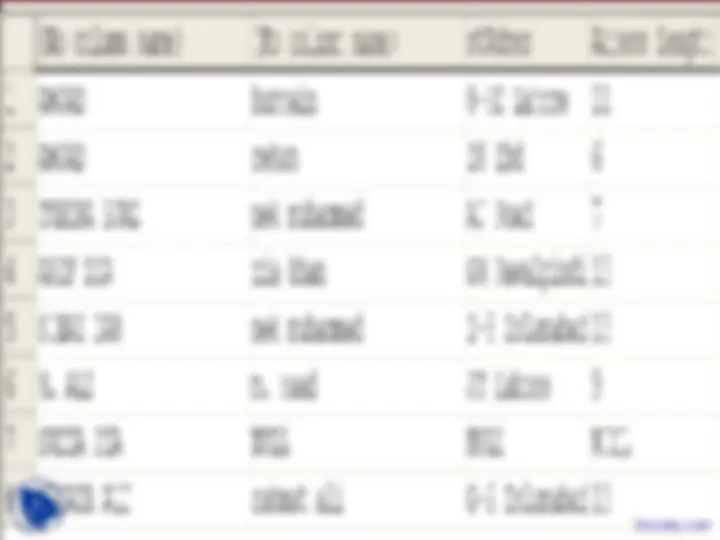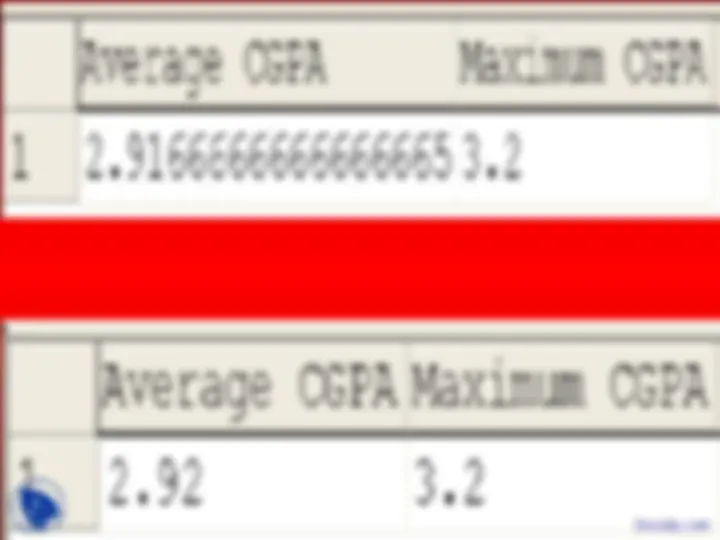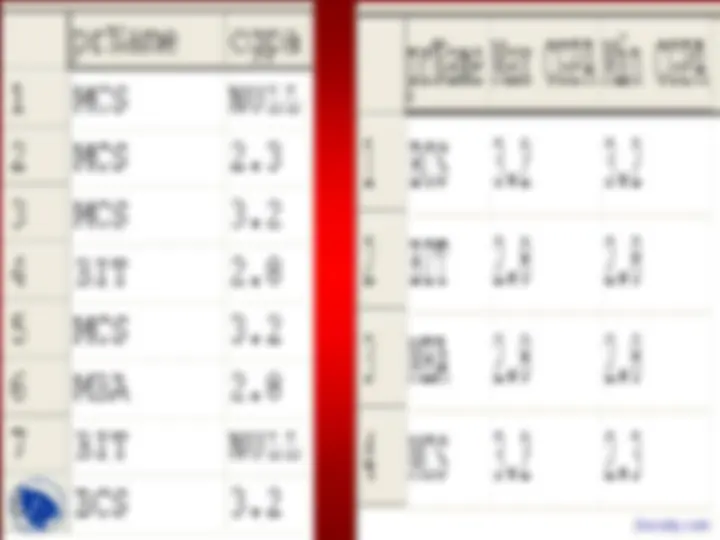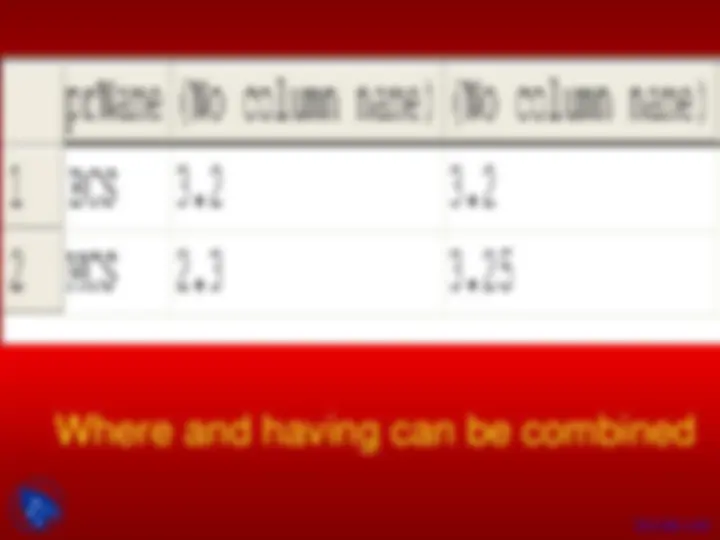



















Study with the several resources on Docsity

Earn points by helping other students or get them with a premium plan


Prepare for your exams
Study with the several resources on Docsity

Earn points to download
Earn points by helping other students or get them with a premium plan
Community
Ask the community for help and clear up your study doubts
Discover the best universities in your country according to Docsity users
Free resources
Download our free guides on studying techniques, anxiety management strategies, and thesis advice from Docsity tutors
An overview of various topics in database management systems, including order by, functions, aggregate functions, group by, having, and accessing multiple tables. It includes examples of sql queries using these concepts, such as displaying student data in ascending order, using functions like upper and len, calculating averages and maximums, and joining multiple tables.
Typology: Slides
1 / 25

This page cannot be seen from the preview
Don't miss anything!


















Practice Query
Using Functions
SELECT upper(stName), lower(stFName), stAdres, len(convert(char, stAdres)), FROM student
Aggregate Function Example
SELECT stName, avg(cgpa) as 'Average
CGPA', max(cgpa) as 'Maximum CGPA' from student
SELECT prName, max(cgpa) as ‘Max
CGPA', min(cgpa) as ‘Min CGPA' FROM student GROUP BY prName
SELECT select_list [ INTO new_table ] FROM table_source [ WHERE search_condition ] [ GROUP BY group_by_expression ] [ HAVING search_condition ] [ ORDER BY order_expression [ ASC | DESC ] ]
Where and having can be combined
Cartesian Product Inner join Outer Join Full outer join Semi Join Natural Join